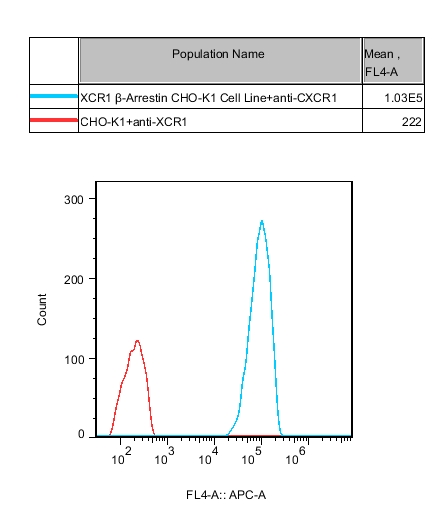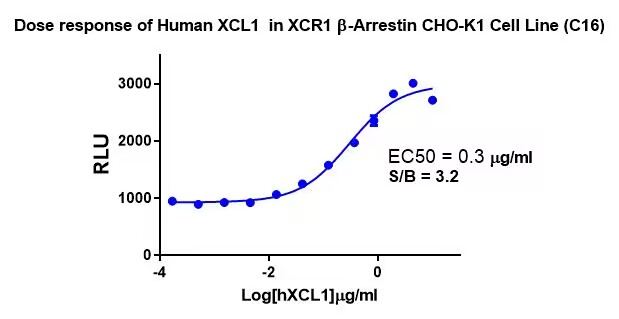XCR1/β-Arrestin/CHO
CBP71413
詢 價(jià)
索取protocol
產(chǎn)品描述
產(chǎn)品數(shù)據(jù)庫(kù)
| I. Background | |
| XCR1 is one of more than 20 distinct chemokine receptors expressed in human leukocytes. Chemokines primarily act to promote leukocyte chemotaxis to sites of inflammation. XCR1 is expressed by a subset of dendritic cells [7] and along with its ligand 3647 (lymphotactin), is important for dendritic-cell-mediated cytotoxic immune responses and for the induction of self-tolerance and generation of Treg cells in the thymus. | |
| II. Introduction | |
| Host Cell: |
CHO |
| Stability: | 20 passages (in-house test, that not means the cell line will be instable beyond the passages we tested.) |
| Freeze Medium: | 90% FBS+10% DMSO |
| Culture Medium: | F12K+10%FBS+5ug/ml puromycin+5ug/ml blastcidin |
| Mycoplasma Status: | Negative |
| Storage: | Liquid nitrogen immediately upon delivery |
| Application(s): |
Functional assay for XCR1 |
| Assay Format: | β-arrestin |
| Ⅲ. Description of Host Cell Line | |
| Organism: | Hamster |
| Tissue: | Ovary |
| Morphology: | Epithelial |
| Growth Properties: | Adherent |
| Ⅳ. Representative Data | |
|
Figure 1.Recombinant XCR1/β-Arrestin/CHO constitutively expressing XCR1. |
|
|
Figure 2. Dose response of Human XCL1 in XCR1 β-Arrestin CHO-K1 Cell Line (C16). |
|




